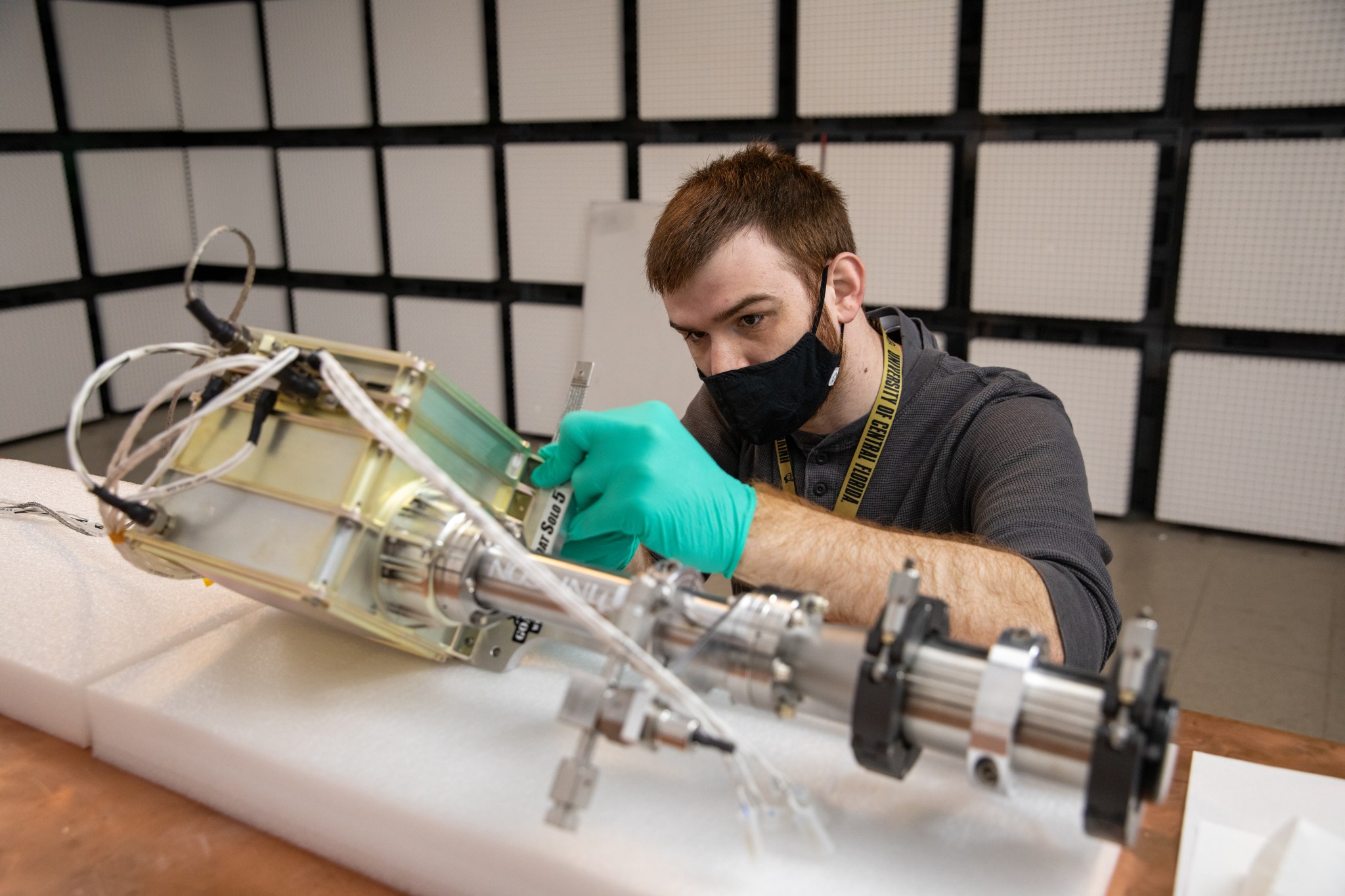Nate Cain, an electronics engineer at NASA’s Kennedy Space Center in Florida, prepares to conduct electromagnetic interference (EMI) testing for the Mass Spectrometer Observing Lunar Operations (MSolo) instrument inside the EMI Laboratory on Feb. 14, 2022. The engineering development unit being tested matches the instrument that will be on NASA’s water-hunting lunar robot, the Volatiles Investigating Polar Exploration Rover, or VIPER. The EMI testing takes several days and will verify that MSolo can control the electromagnetic emissions it will produce during its mission and meets EMI susceptibility requirements as part of its preparation to operate in the lunar environment.
As part of NASA’s Commercial Lunar Payload Services initiative, MSolo is an instrument on four deliveries, including VIPER. On the Moon, it will help analyze the chemical makeup of landing sites with later missions studying water on the lunar surface. Launching on a SpaceX Falcon Heavy rocket, VIPER will land at its destination – Nobile Crater at the Moon’s South Pole – aboard Astrobotic’s Griffin lander. During VIPER’s 100-day mission, MSolo will work with other instruments and a drill to better understand resources on the Moon, which will support human exploration as part of NASA’s Artemis missions. With Artemis, NASA will send astronauts, including the first woman and next man, on a mission to the surface of the Moon. Photo credit: NASA/Kim Shiflett

































